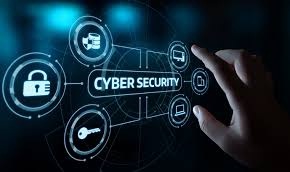
What is Cyber Security?
The rise in digital cyberattacks has made cybersecurity a priority for businesses and individuals. For businesses, cybercrimes can lead to financial loss, operational disruption, data breaches, and a loss of trust, while individuals face identity theft, financial fraud, and privacy invasion.
Cybersecurity is the practice of protecting systems, networks, and programs from digital attacks. These cyberattacks are usually aimed at accessing, changing, or destroying sensitive information; extorting money from users through ransomware; or interrupting normal business processes.
Implementing effective cybersecurity measures is particularly challenging today because there are more devices than people, and attackers are becoming more innovative.
A successful cybersecurity posture has multiple layers of protection spread across the computers, networks, programs, or data that one intends to keep safe. In an organization, a unified threat management gateway system can automate integrations across products and accelerate key security operations functions: detection, investigation, and remediation. People, processes, and technology must all complement one another to create an effective defense from cyberattacks.
People
Users must understand and comply with basic data protection and privacy security principles like choosing strong passwords, being wary of attachments in email, and backing up data. Learn more about basic cybersecurity principles from these.
Processes
Organizations must have a framework for how they deal with both attempted and successful cyberattacks. One well-respected model, the NIST cybersecurity framework, can guide you. It explains how you can identify attacks, protect systems, detect and respond to threats, and recover from successful attacks.
Technology
Technology is essential to giving organizations and individuals the computer security tools needed to protect themselves from cyberattacks. Three main entities must be protected: endpoint devices like computers, smart devices, and routers; networks; and the cloud. Common technology used to protect these entities include next-generation firewalls, Domain Name System (DNS) filtering, malware protection, antivirus software, and email security solutions.
Why is cybersecurity important?
In today’s connected world, everyone benefits from advanced cybersecurity solutions. At an individual level, a cybersecurity attack can result in everything from identity theft to extortion attempts, to the loss of important data like family photos. Everyone relies on critical infrastructure like power plants, hospitals, and financial service companies. Securing these and other organizations is essential to keeping our society functioning.
Everyone also benefits from the work of cyberthreat researchers, like the team of 250 threat researchers at Talos, who investigate new and emerging threats and cyberattack strategies. They reveal new vulnerabilities, educate the public on the importance of cybersecurity, and strengthen open-source tools. Their work makes the internet safer for everyone.
Types of cybersecurity threats
Cloud security
Cloud security provides rapid threat detection and remediation, enhancing visibility and intelligence to prevent malware impacts. It delivers robust protection in multicloud environments, streamlining security without affecting user productivity, and is essential for the safety of applications, data, and users in both hybrid and remote work settings. The scalable nature of cloud security allows for the defense of an expanding array of users, devices, and cloud applications, ensuring comprehensive coverage across all points of potential attack.
Best practices for cybersecurity
Adopting best practices for cybersecurity can significantly reduce the risk of cyberattacks.
Here are three key practices:
- Regular software and operating system updates
Updating software and operating systems regularly helps to patch vulnerabilities and enhance security measures against potential threats. - Using strong and unique passwords
Creating strong and unique passwords for each online account can enhance cybersecurity, as cyberattacks often exploit weak or stolen passwords. - Implementing multi-factor authentication (MFA)
Multi-factor authentication involves multiple identification forms before account access, reducing the risk of unauthorized access. Cisco Duo includes MFA that can integrate with most major applications as well as custom apps.
Following these practices enhances cybersecurity and protects digital assets. It’s vital to stay vigilant and informed about the latest threats and security measures to stay ahead of cybercriminals.
